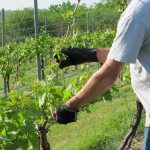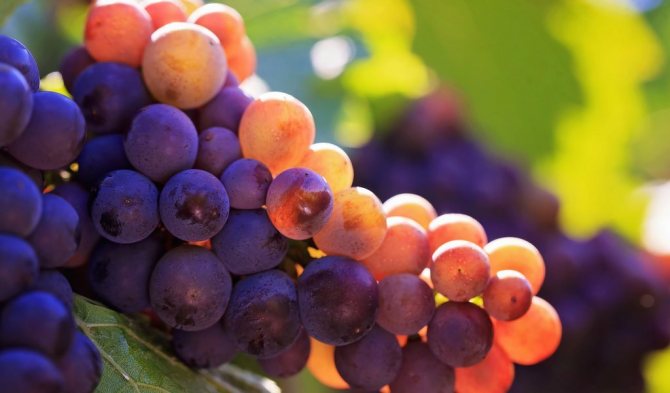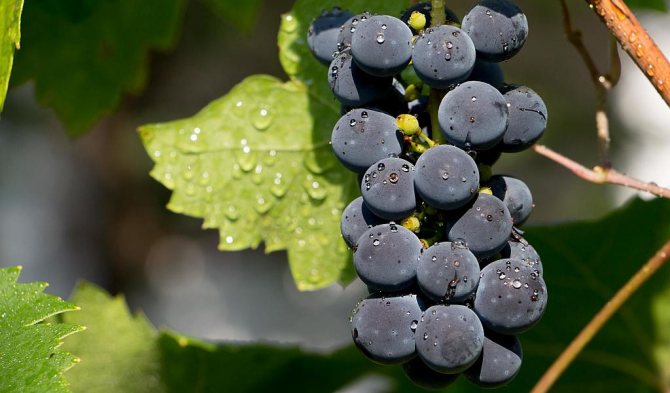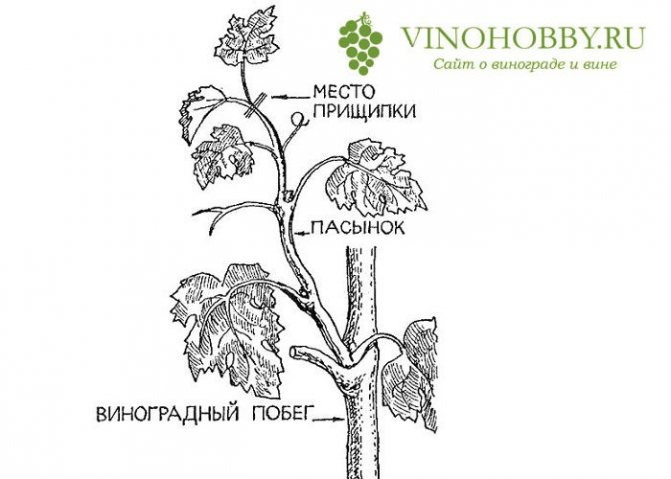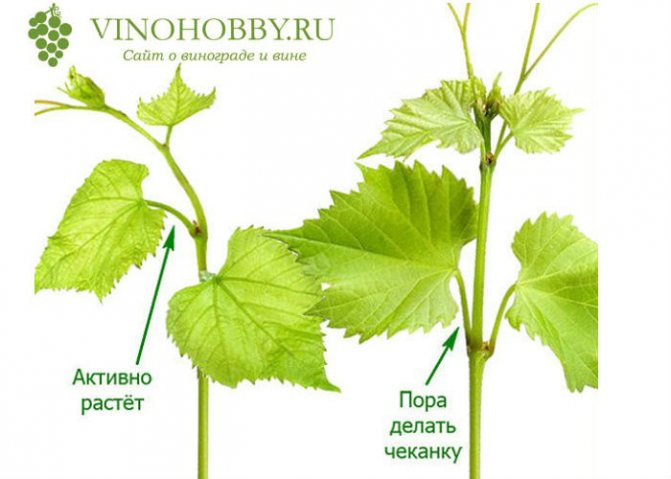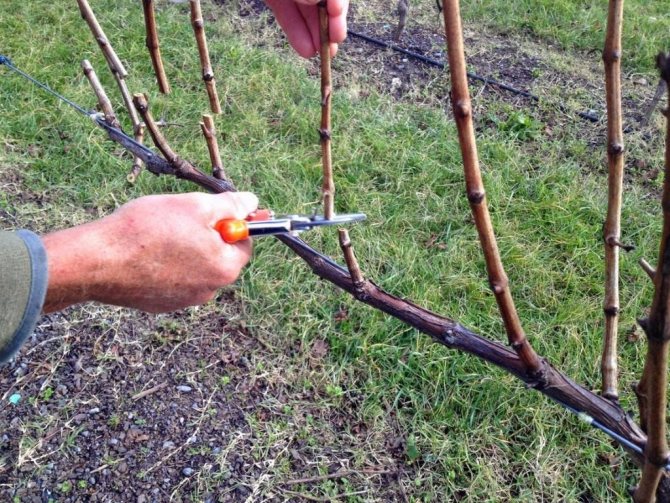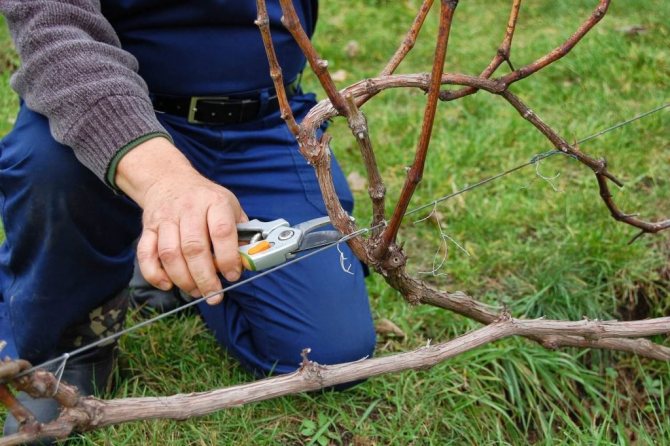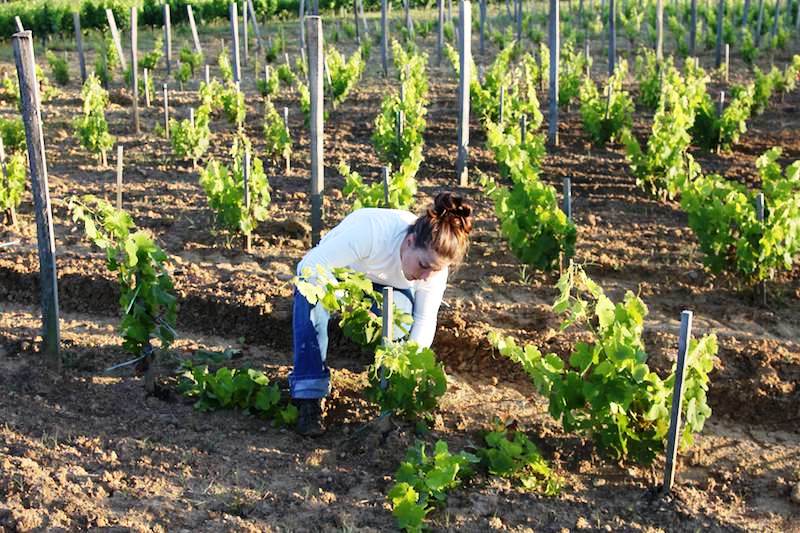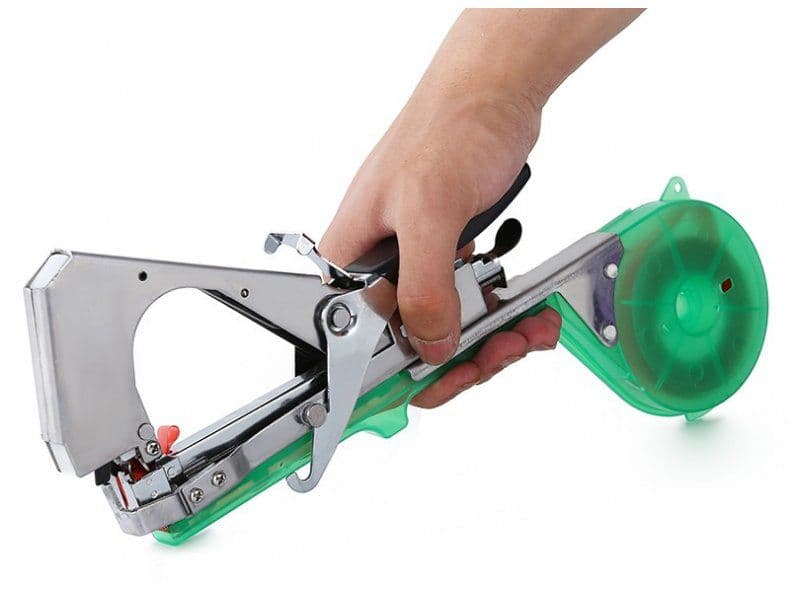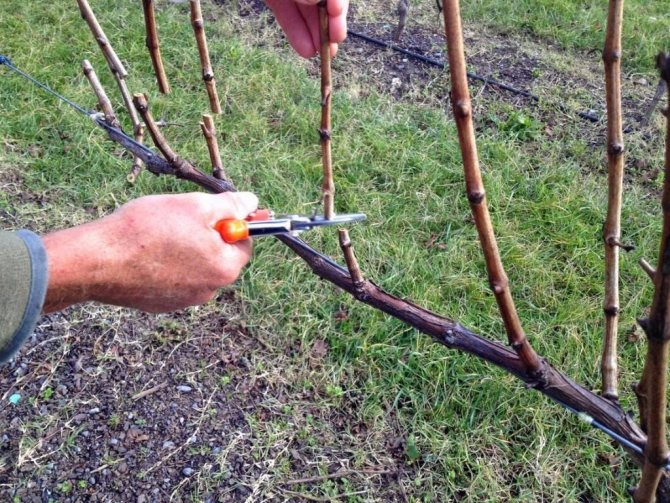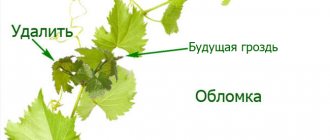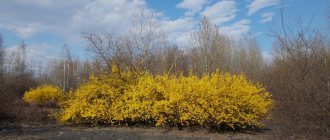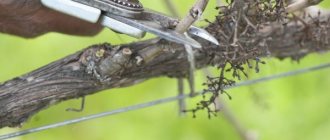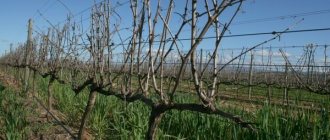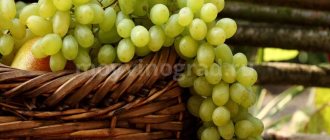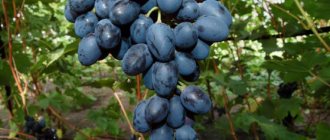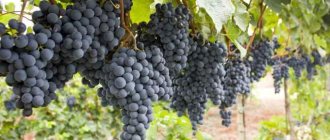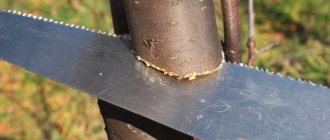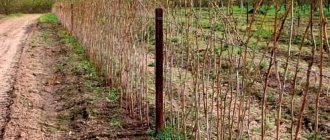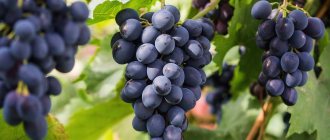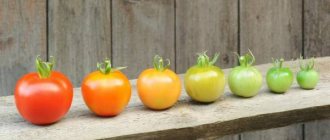Growing grapes is one of the main stages in the formation of a true lover of horticultural crops. But this plant is very demanding, it needs constant care, pruning and other procedures that will save the bushes from weeds and turning into impenetrable jungle. After the pruning process, the vitality of the culture increases, the fruits are healthy and of high quality.
Important! Grapes are characterized as a fast-growing crop, so it is important to cut off newly-made shoots in a timely manner. If the gardener avoids this procedure, then the new stepchildren in spring and summer will take away the bulk of the nutrients and forces of the plant necessary for the formation of fruits.
What are green operations
Gardeners carry out the main pruning of grapes in early spring or autumn, but the formation of bushes does not end there. Throughout the growing season, excess shoots and leaves are removed, and the yield is normalized. These activities are called green operations or summer pruning. They consist of:
- wreckage;
- pinching;
- pinching;
- normalization of bunches;
- minting;
- thinning the leaves.
It is impossible to indicate the calendar dates of operations, since currently grapes are grown in regions with very different climatic conditions.... The need for each type of pruning is determined based on the vegetation phase of the plant.
Summer grape pruning - video
Types of pruning and other ways of forming grapes
Pruning grapes in May and June refers to the spring period. At this time, the vine is formed, removing the parts that have suffered in the winter. In summer, along with pruning, grapes are minted, pinched and stepson, which helps the sunlight to illuminate the leaves and bunches unhindered. It is also important that after all the care measures, the plant's immunity increases - this is one of the main reasons for carrying out these procedures.
Methods for pruning grapes
Pruning grapes
There are several types of pruning that you need to properly study in order to apply to the plant directly on your site. Among them are distinguished:
- "Short cut" carries the goal of leaving only about 3 eyes on the shoot. They are called recovery knots. It is very important to note that if the internal position of the lower ocellus is observed in the replacement shoot, then three buds must be left on the back side. The vine that begins to grow from the lower one is removed. Thus, the grower forms a replacement knot with an outward inclination. The newly-made shoot will grow from their upper eye, which becomes the reason for the formation of a full-fledged grape bush. This method is suitable for varieties bearing lower corner buds.
- "Medium cut" performed most often so as to leave 6 eyes on each shoot. In total, up to 60 kidneys are left. This method is rightfully considered the most gentle, because after this procedure, the kidneys acquire resistance to frost.
- "Long cut" held for grape varieties such as Taifi Pink, Black Kishmish and Parkent Pink. After the procedure, these varieties begin to bear fruit rapidly and abundantly.Long pruning of grapes in summer should be done leaving about 14 buds at the beginning of the main part of the plant; at the same time, an average of 50 pieces are left on the entire vine.
- "Mixed cropping" It is characterized as a combination of several types of pruning, that is, some shoots will be prone to "short pruning", and some, most often fruit ones - to "long pruning".
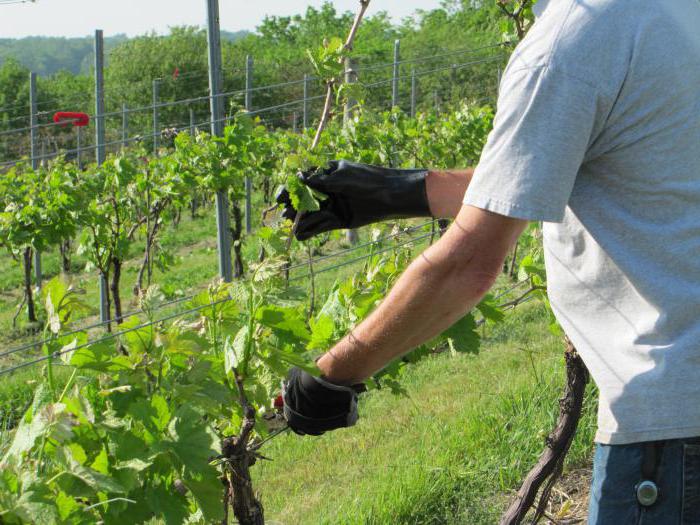
Short cut
Important! If we talk about a summer cottage, then a mixed method of pruning grapes is best suited. In this case, the renewal of the vines will occur consistently and constantly.
Selecting and pruning unnecessary shoots
How are grapes pruned in the summer from unnecessary shoots? There are a number of methods for shaping grapes. They help to more rationally approach the use of the planting area, which will allow the fruits to form healthy and tasty. The process consists in tying the sleeves of the vines to the supports, trimming and removing excess components, pinching unnecessary shoots.
The general formation scheme is as follows:
- the head of the bush is removed at the first stage;
- sleeves are updated;
- every year, new fruit links or even several are formed;
- the knots are renewed, restored and replaced.
Technological shaping is one of the most successful methods, which consists in the fan formation of grapes. This method is used most often by residents of the middle lane, since the fan-shaped bush is easy to care for.
Bushes that have lived on the soil for only a year must be pruned, because after that they can form correctly. It also helps to move into the fruiting phase. In the fall, circumcision is carried out into 2 kidneys, which will then function as the main sleeves.
Important! Serious pruning is not recommended during the growing season. All major events are advised to be carried out in the spring.
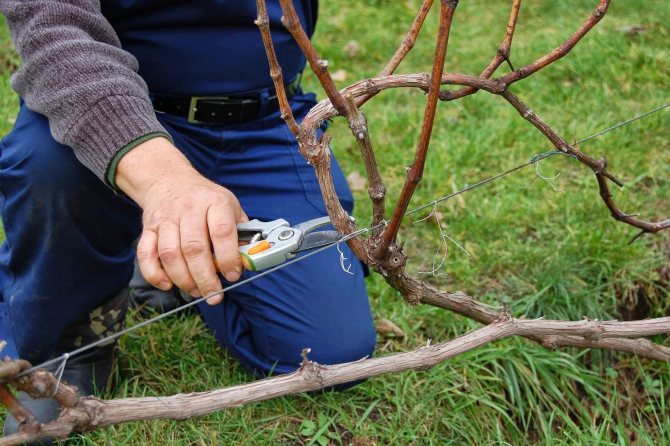

Pruning unnecessary shoots
It is worth noting that by the 4th year of the bush's functioning, about four fruiting circles have time to form. Therefore, the formation of a new sleeve carries the goal of strengthening the plant and helping it continue to bear a large number of fruits. At the same time, the rejuvenation procedure should be carried out every 2 years, which will help maintain the genetic memory of the varieties.
If we talk about pruning in the spring, it is recommended to carry out a corrective pruning before the juice begins to move through the "circulatory system" of the grapes. This helps to maintain the schematic grape shape that was originally chosen by the grower.
Wreckage
As soon as new shoots appear on the vine last year, you need to make sure that only one grows from one point... Leave the strongest, the weaker ones break out at the base. As a result of such actions, the fruiting vine receives good conditions for development.
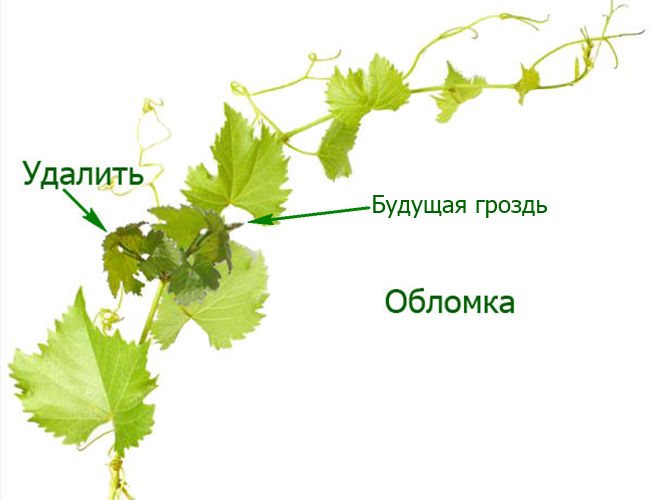

The first Green operation - a wreckage, during which the extra shoots of grapes are removed
Timing of pruning
Not all novice gardeners know how to care for grapes in summer. You need to remember a few rules and principles of care.
Pruning grapes in June begins with cleaning the bush from young shoots. Fruiting vines are best tied to supporting supports. At this point, additional knots develop, which can later bring a rich harvest.
July is rich in events. After flowering, the best thing to do is to fertilize the grapes well, process them and remove the stepsons. Fertilizing the plant guarantees a rich and sweet harvest, and pruning in accordance with the rules - new fruitful vines. Pruning grapes in July is a very important action for creating favorable conditions for the development of a fruit bush, and it is at this time that spraying and fertilizing should be carried out.
The chasing of young shoots is carried out in August.Experienced growers carefully trim the root portion from the top. This process is necessary to stimulate the rest of the roots to work. Some gardeners constantly get rid of antennae, although this is not a necessary procedure. The plant is very similar to a liana, so the antennae are a link with neighboring objects. If the bush is tied up, the antennae can be cut off. Cultivation ends with grape pruning in August.
Small bottom line: in the summer, the vine should be more carefully looked after. You should strive for the following results:
- The plant will feed the required number of vines without spending energy.
- Ripening of fruiting shoots that will yield a good harvest.
- The shrub will be protected from bacteria, some diseases and pests.
- Useful elements will only strive for fruitful clusters.
- As a result, the formation of the bush will be correct.
Pinching
When one or two inflorescences have formed on the shoots of the current year, this is a signal that it is necessary to pinch. 5-6 leaves are left over future bunches, inthe tip of the shoot is removed above the antennae... This makes it possible to get larger clusters and berries.
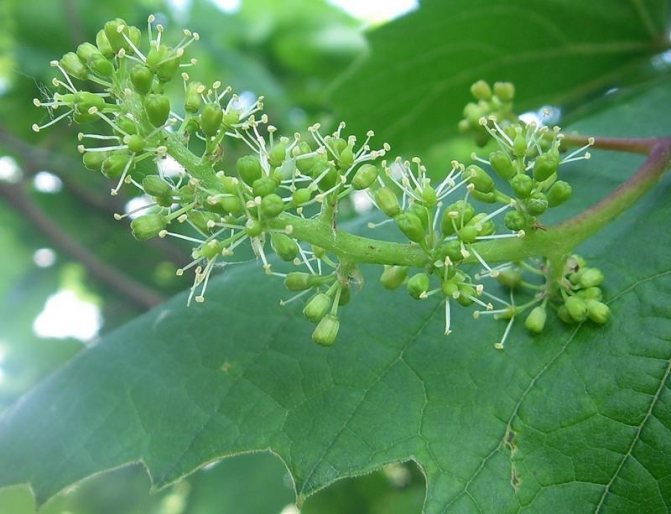

The tops of fruiting shoots are removed when inflorescences are formed on them.
Pinching fruiting shoots of grapes - video
How to thin out a brush
To give the bunches a more favorable presentation, thinning of the brush is performed. Usually, this procedure is carried out for table varieties, which are characterized by a high density groove.
Small berries are cut with scissors. You should also cut off the top of the bunch - underdeveloped fruits often remain here.
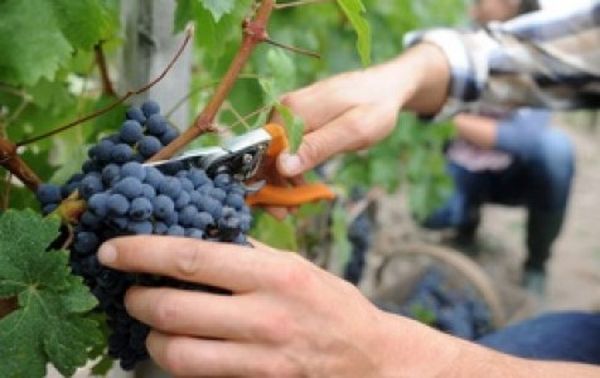

In northern regions (for example, in Siberia), brush thinning is rare. The reason is the harsher climate.
Stepping
On the vine of the current year, additional shoots grow in the leaf axils. They are called stepchildren. Throughout the growing season stepsons remove, leaving 1 bottom sheet.
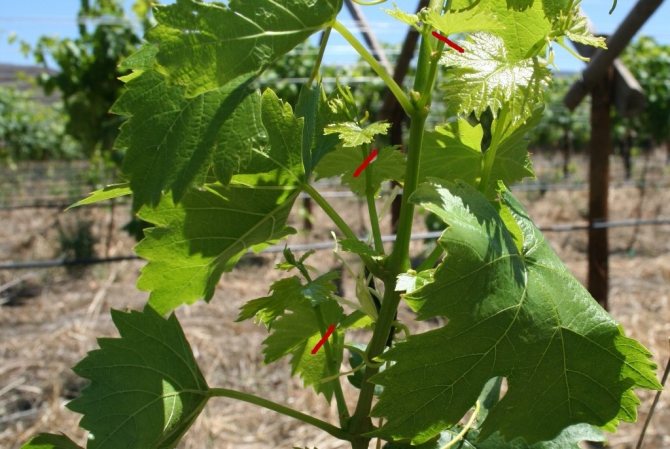

The bottom sheet on the stepsons must be left, and the growth point must be removed
Grapes picking - video
Thanks to this operation, the bushes are well ventilated, the risk of diseases is reduced, and the supply of nutrients to the fruit-bearing vines is increased.
Pinching grapes
Pinching is a technique by which the growth point at the shoot is removed. It consists in cutting off the upper part of the shoot to the length of the three upper leaves or 3-5 cm. The operation to remove the growth point is required in three cases:
- to prevent shedding of flowers and ovaries;
- if necessary, accelerated shaping of the bush;
- for growing crops on stepchildren.
In the first case, the technique is performed before the beginning of flowering, the fruit-bearing shoots are pinched on the old wood and on the arrows, without touching the weak shoots. In the second case, pinching stimulates the growth of stepchildren, who will participate in the formation of the sleeve. In the third case, the technique allows you to restore the bushes with numerous freezing eyes or vines. Such an operation is not carried out on replacement knots.
Normalization of bunches
This operation is carried out in regions where the short summer does not allow all grapes to ripen. As a rule, 1-2 bunches are left on each fruiting vine... The rest are removed.
They also carry out rationing of berries. After they began to fill up, it becomes noticeable that some are lagging behind in development. Such berries are carefully cut. This makes it possible for those who remain to receive more nutrients, become larger and sweeter.


You can remove the whole bunches, as well as their parts and even individual berries that do not develop well.
In the description of the grape variety, as a rule, it is indicated what kind of load on the vine - how many bunches - is recommended.
Rationing of the grape harvest - video
Removing sundew roots from grapes
Growing the root system As already mentioned in the article "Grape seedlings", in order to preserve the vitality of the grape bush, it is necessary to regularly remove the "sundew" roots located in the surface layer of the soil. Removal of "sundew" is carried out twice in the summer. They shovel the earth from the head of the bush to a depth of 2-3 cm, pluck out, and sometimes cut out juicy bright red competing roots. It is also necessary to remove the same roots from the sleeves touching the soil surface.
Chasing
Coining refers to the removal of a growth point on a vine of the current year. The time of this operation suggests the appearance of the shoot - its top should straighten.
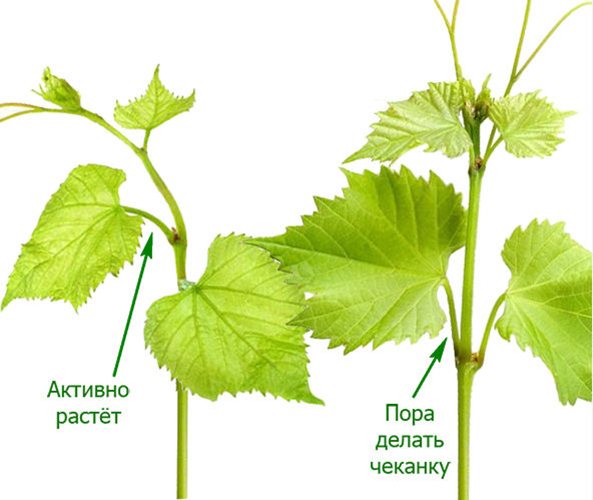

The time of the minting is determined by the appearance of the vine
If not minted, then the upper leaves will draw off the nutrients necessary for the ripening of the berries.
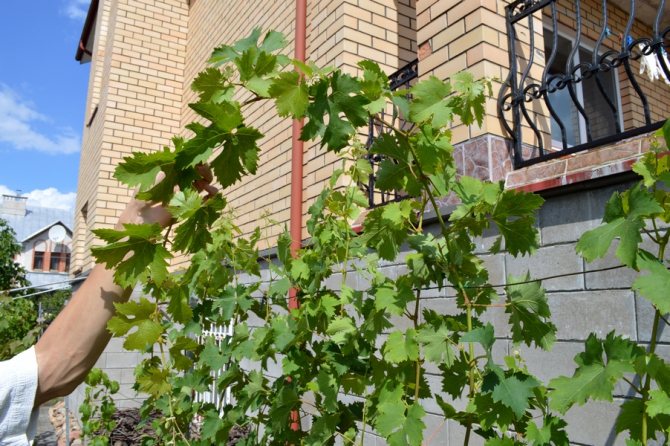

Minting is carried out when the shoot has straightened, cutting off 30-40 cm of vines with underdeveloped leaves
Removing the tops of the vines also eliminates unwanted shading of the lower part of the bush, when the shoots grow above the trellis and hang to the sides.
Chasing grapes - video
How to remove a mustache
A grape mustache is a modified shoot. It differs from ordinary lashes in its purpose: if an ordinary shoot is responsible for the development and fruiting of a shrub, then the antennae fix it on a support.
Removal is justified only for those vine tendrils that are not attached to the support, otherwise they can "knock down" the bush, clinging to adjacent shoots. In addition, even such miniature shoots consume nutrients from the vine, which means they are taken away from the bunches.
And although many gardeners are of the opinion that there is no direct need to pull off the mustache, if you do decide to do it, just pinch them off with your fingers.
Thinning leaves
When the grapes begin to color, the shading leaves are removed... This is done in 3 steps:
- First, 1/3 of the leaves are cut off.
- After a week, remove half of the remaining.
- After another week, the bunches are completely opened.
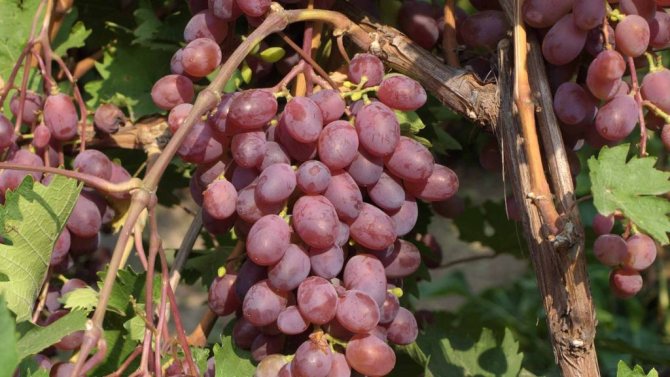

Leaves should not shade ripening clusters, they are gradually cut off
The shade also interferes with the timely drying of dew and moisture after rains, which leads to fungal diseases.
Opening bunches of grapes - video
Only in direct sunlight does the grape acquire all the flavor and aroma qualities that are so appreciated in it.
disadvantages
- the abundance of stepchildren, designed to provide the plant with nutrients, leads to their use not for their intended purpose, but for their own growth and development;
- extra shoots interfere with the development of the main one and slow down the ripening process, which negatively affects the quality and quantity of the future grape harvest;
- when a dense bush is formed, due to a violation of the ventilation regime, there is a risk of developing fungal diseases in it;
- a large amount of foliage leads to shading of the bunches, which interferes with their maturation and disrupts the process of photosynthesis.
If you are looking for a bountiful harvest, check out our tips for getting healthy, strong shoots.
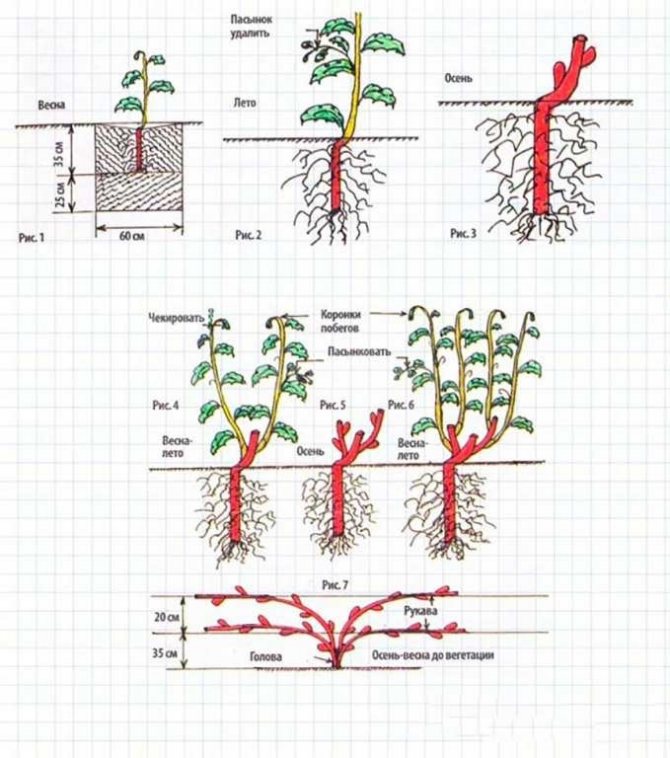

Pruning neglected bushes
The neglected (previously unformed) grape bushes require increased attention even after the main pruning. In summer, buds wake up on their perennial wood, many new shoots appear. Only 10-15% of them will take part in the further formation of the plant, the rest will only thicken the bush, so they need to be removed. This will help the grapes direct nutrients to the berries, rather than increasing the green mass. Follow the green operations described above this season, and postpone radical rejuvenating pruning for fall or next spring.
Ways to remove stepsons
- Pinching is removal by pinching the fingers or breaking out. This is the simplest and most common method, but not the most efficient one. In the node from which the stepson begins to develop, there is a peephole with kidneys. The main fruiting bud should, after winter, give a new shoot next year. If you break the stepson, you can damage the kidney, then a new shoot will immediately begin to form from it, weakening the main one. To prevent this from happening, it is recommended to delete stepchildren in the way described below.
- Cutting off the top of the stepson, leaving one sheet. Such a stepson is a watchdog who stops the development of the kidney in a given season. Subsequently, additional 2 - 3 leaves are formed on it - stepchildren of the second order, which is ideal for the normal functioning of the shoot. This method is suitable for a small vineyard, as pruning will need to be done more often.
- Pruning the top of the long stepchildren leaving four leaves is considered optimal to provide the necessary nutrients for the shoot. This method significantly saves time, makes the bush bulkier and helps in the fight against infected leaves. Over time, second-order stepchildren will form on the left stepchild. Such a number of leaves are left on them so that in total four are preserved, and the upper part of the already old ones is cut off. All leaves infected with fungal diseases must be removed, they are easily replaced by newly formed stepchildren.
How to properly trim and care for stepsons, you can learn from the video below. The process is laborious, but not complicated, so even novice growers can easily cope with the task and enjoy the harvest.
Process features
Summer coinage has the following differences:
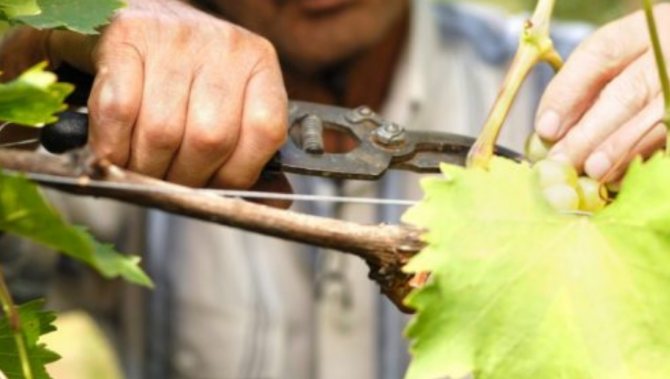

Despite the seeming complexity, the process is very simple - if you understand it, then even a teenager can do the job.
- Unlike pinching, in this case, a much larger part of the shoot is removed.... And long branches are processed that need this procedure every summer.
- The following shoots are minted: vines grown on the main perennial trunk, appeared on the lateral branches of the plant and shoots on fruit arrows. That is, all large-sized shoots are processed, which grow and develop very intensively every summer.
- The most in need of this procedure are varieties with an average ripening period.... Almost all of them tend to build up excess green mass, and this reduces the supply of nutrition to the berries, they ripen much longer, often even exceeding the stated time.
- In the process of this work, there is a redistribution of nutrients in the plant.... It ceases to release the main resources for the growth of new shoots and directs them to the formation of ripening bunches and nutrition of dormant buds, which is very important for subsequent development.
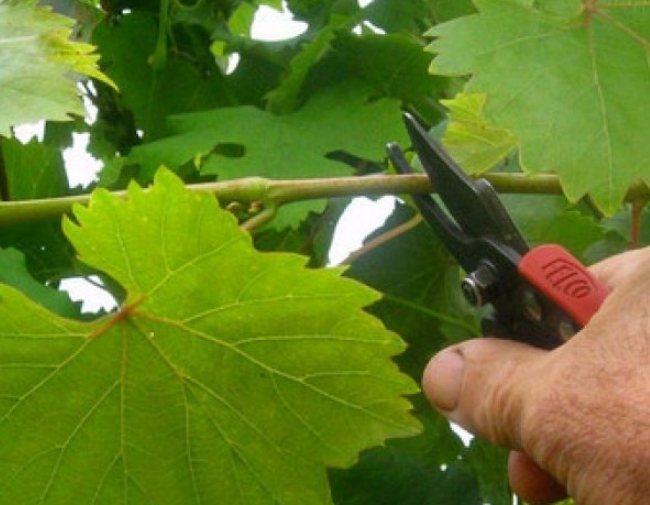

Limiting shoot growth has a positive effect on both yield and development of the plant as a whole.
- The lighting of the grapes is significantly improved... Due to this, the grapes are poured and ripen faster and ultimately turns out to be sweeter, as the accumulation of sugars improves.
- The plant is much better ventilated... Moisture from precipitation, fog and dew evaporates much faster, and this significantly reduces the likelihood of fungal diseases. The optimal conditions for them are high humidity and not very good illumination.
- Young vines ripen much better and faster.... After the redistribution, resources are used not for growth, but for strengthening the shoots, so woodiness occurs quickly and grapes can more easily tolerate low temperatures.
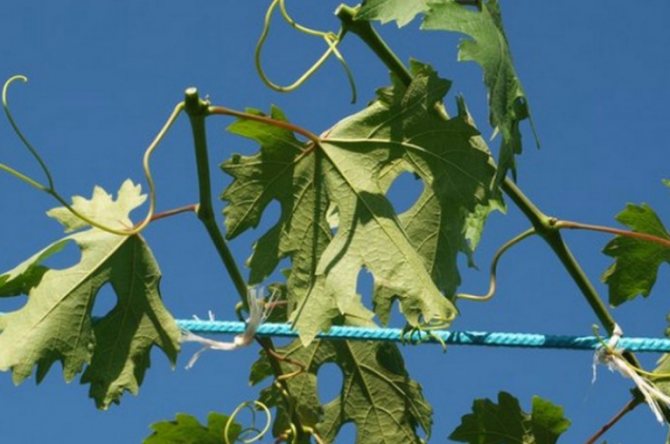

When cutting off the tops, the growth of young shoots stops, and they begin to grow stiff faster
The author of the video gives a simple advice on how to determine when it's time to mint grapes.The ends of the shoots straighten and become stiffer, during this period their growth slows down very much and the best conditions for work are created.

